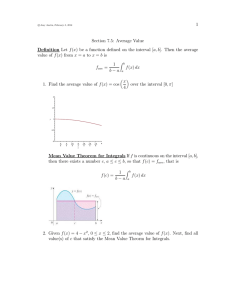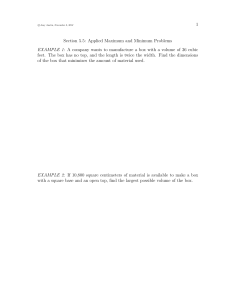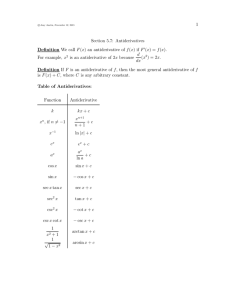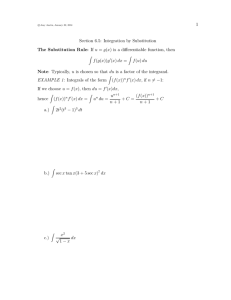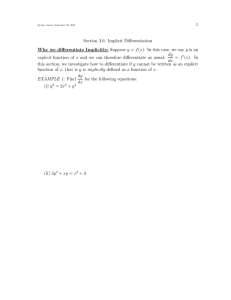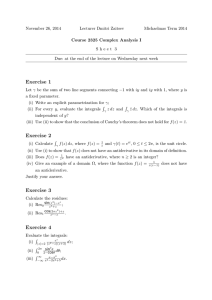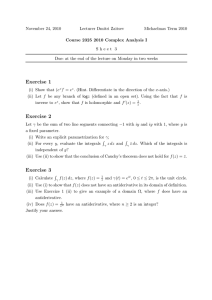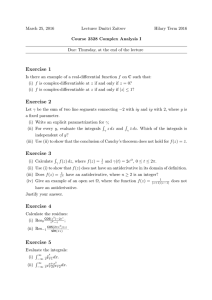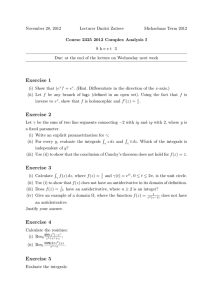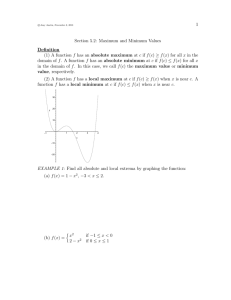Document 10482327
advertisement
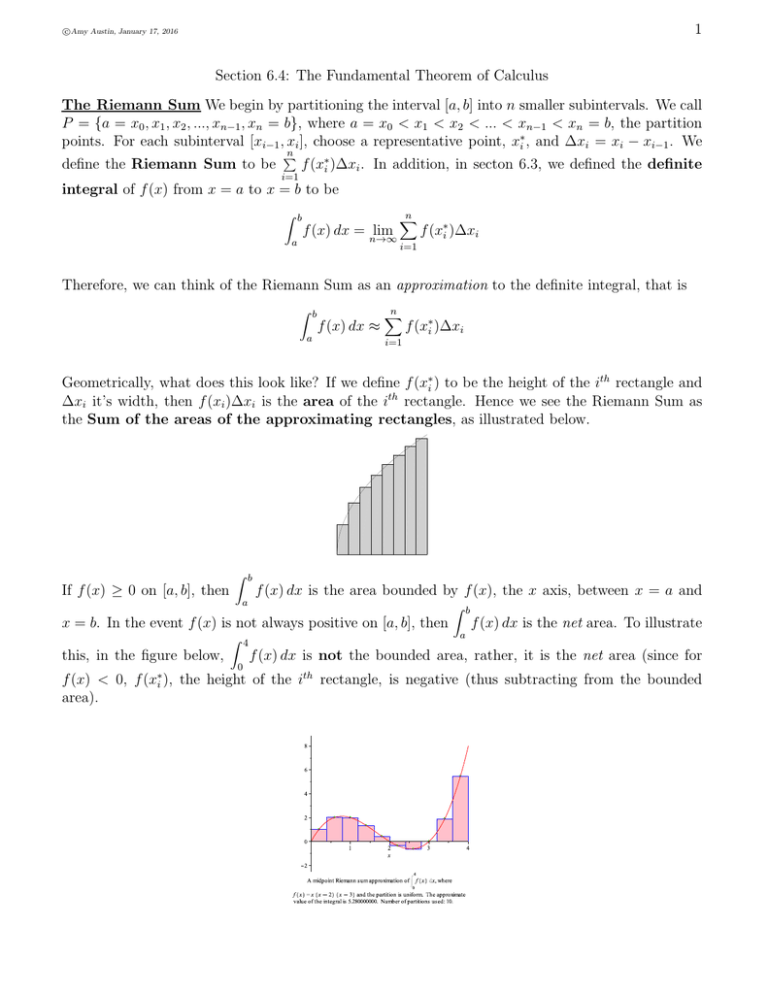
1
c
Amy
Austin, January 17, 2016
Section 6.4: The Fundamental Theorem of Calculus
The Riemann Sum We begin by partitioning the interval [a, b] into n smaller subintervals. We call
P = {a = x0 , x1 , x2 , ..., xn−1 , xn = b}, where a = x0 < x1 < x2 < ... < xn−1 < xn = b, the partition
points. For each subinterval [xi−1 , xi ], choose a representative point, x∗i , and ∆xi = xi − xi−1 . We
define the Riemann Sum to be
n
P
f (x∗i )∆xi . In addition, in secton 6.3, we defined the definite
i=1
integral of f (x) from x = a to x = b to be
Z
b
a
f (x) dx = n→∞
lim
n
X
f (x∗i )∆xi
i=1
Therefore, we can think of the Riemann Sum as an approximation to the definite integral, that is
Z
b
a
f (x) dx ≈
n
X
f (x∗i )∆xi
i=1
Geometrically, what does this look like? If we define f (x∗i ) to be the height of the ith rectangle and
∆xi it’s width, then f (xi )∆xi is the area of the ith rectangle. Hence we see the Riemann Sum as
the Sum of the areas of the approximating rectangles, as illustrated below.
If f (x) ≥ 0 on [a, b], then
Z
b
a
f (x) dx is the area bounded by f (x), the x axis, between x = a and
x = b. In the event f (x) is not always positive on [a, b], then
this, in the figure below,
Z
4
Z
b
a
f (x) dx is the net area. To illustrate
f (x) dx is not the bounded area, rather, it is the net area (since for
0
f (x) < 0, f (x∗i ), the height of the ith rectangle, is negative (thus subtracting from the bounded
area).
2
c
Amy
Austin, January 17, 2016
EXAMPLE 1: Refer to the graph provided below to compute the following definite integrals using
the indicated areas:
20
10
Z
D
Z
A
f (x) dx =
C
B
A
40
B
C
15
Z
C
Z
D
D
f (x) dx =
0
f (x) dx =
D
f (x) dx =
Definition (From Zsection 5.7): We call F (x) an antiderivative of f (x) if f ′ (x) = F (x). Our
notation for this is f (x) dx = F (x) + C, where C is any constant.
Table of Antiderivatives:
Function, f (x)
Antiderivative, F (x)
k
kx + c
xn , if n 6= −1
xn+1
+c
n+1
x−1
ln |x| + c
ex
ex + c
a
ax
+c
ln a
cos x
sin x + c
sin x
− cos x + c
sec x tan x
sec x + c
sec2 x
tan x + c
csc2 x
− cot x + c
csc x cot x
− csc x + c
x
1
+1
1
√
1 − x2
x2
arctan x + c
arcsin x + c
3
c
Amy
Austin, January 17, 2016
EXAMPLE 2: Find the following indefinite integrals.
√ !
Z
2x4 + x
(a)
dx
5x5
!
(b)
Z
9
1
√
− 2
2
x +1
1−x
(c)
Z
(8x + ex − xe − π x ) dx
(d)
Z
dx
sin x
sin(2x)
5 sec x +
−
2
cos x
cos x
2
!
dx
4
c
Amy
Austin, January 17, 2016
Fundamental Theorem of Calculus Part II: If f is continuous on [a, b], then
Z
b
a
f (x) dx = F (b) − F (a)
where F (x) is an antiderivative of f (x).
EXAMPLE 3: Evaluate the following definite integrals.
Z 2 6
x − x2
dx
(a)
x7
1
(b)
Z
ln 6
Z
1
3et dt
− ln 3
(c)
0
(w 3 − 1)2 dw
c
Amy
Austin, January 17, 2016
(d)
Z
0
5
3
|x − 1| dx
EXAMPLE 4: Suppose an object is moving according to velocity v(t) = 3t2 − 27, where the position
of the object at time t is measured in feet and time t is measured in seconds. Find the displacement
and distance the object traveled during the first 4 seconds.
